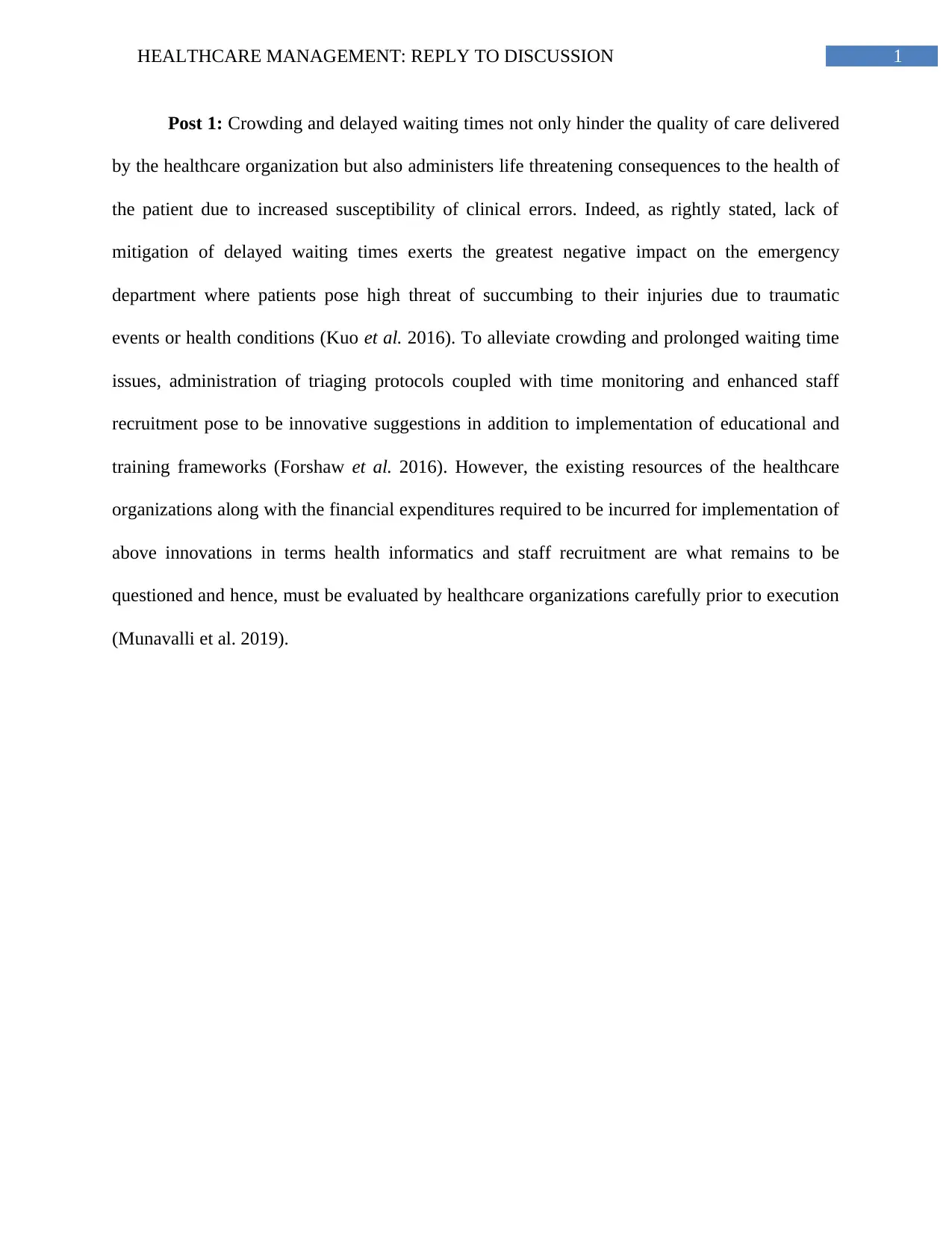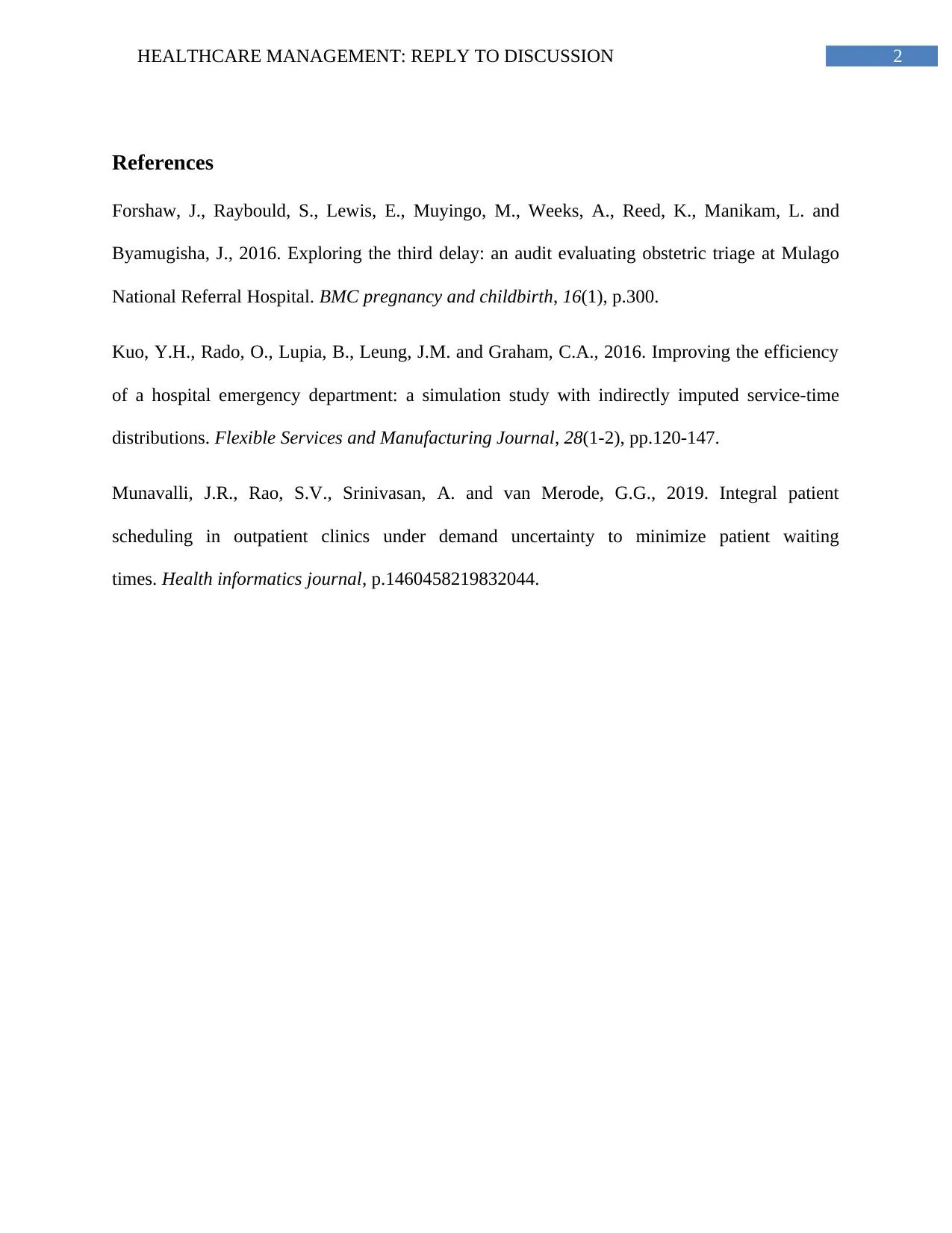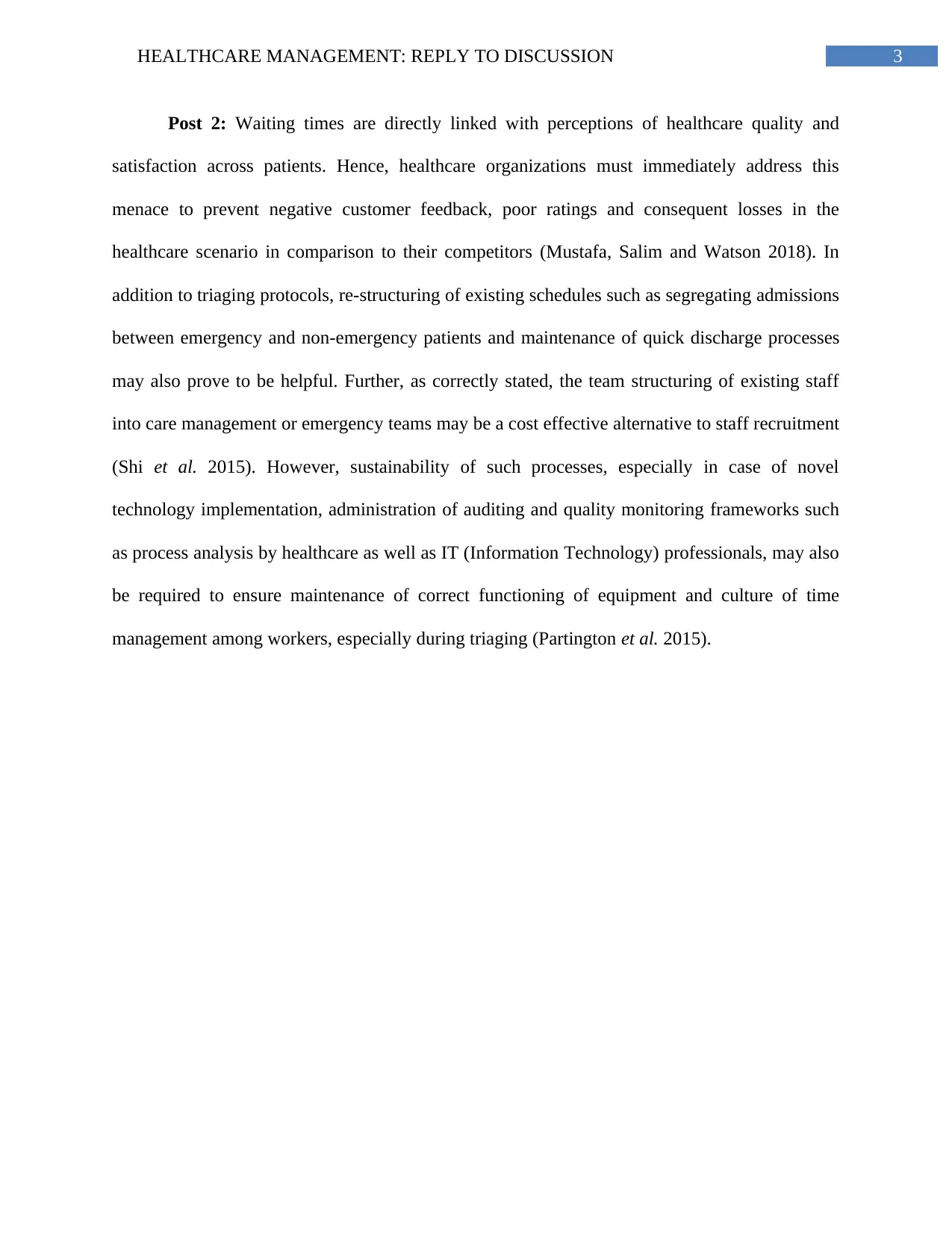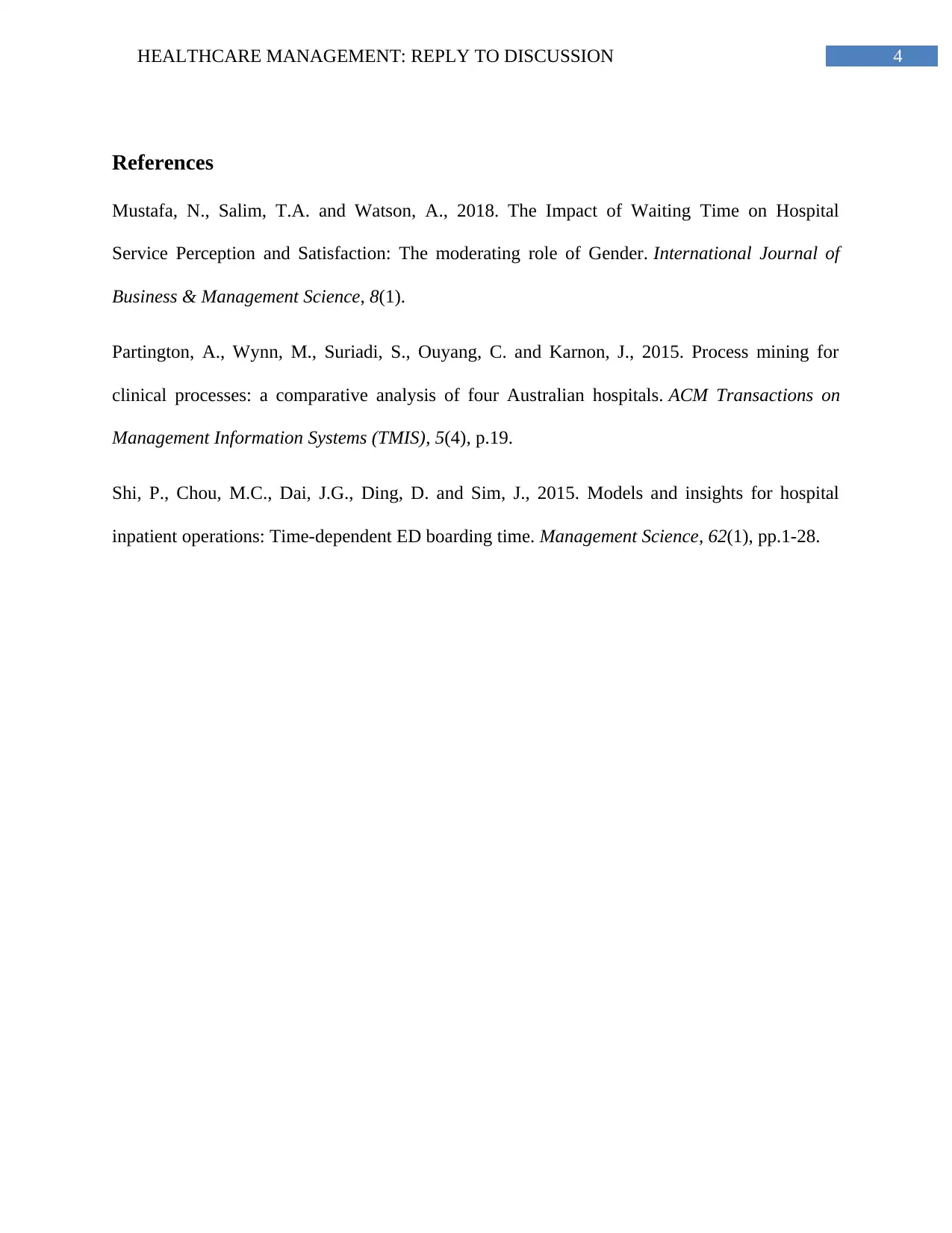Healthcare Management: Discussion 1 Reply - Waiting Time in EDs
VerifiedAdded on 2022/11/13
|5
|716
|427
Discussion Board Post
AI Summary
This discussion board post presents a student's response to a healthcare management discussion, specifically addressing the challenges of emergency department (ED) congestion and prolonged patient waiting times. The student analyzes the negative impacts of these issues, including compromised patient safety, dissatisfaction, and potential for clinical errors. The post references strategies to mitigate these problems, such as implementing triage protocols, adjusting staffing, and restructuring patient flow. It also highlights the importance of considering both internal factors like resource allocation and staff competencies, as well as external factors that influence patient perception and satisfaction. The student emphasizes the need for sustainable solutions and provides examples of initiatives undertaken to reduce waiting times, focusing on the significance of patient satisfaction and quality of care as key performance indicators for healthcare organizations.
1 out of 5






![[object Object]](/_next/static/media/star-bottom.7253800d.svg)